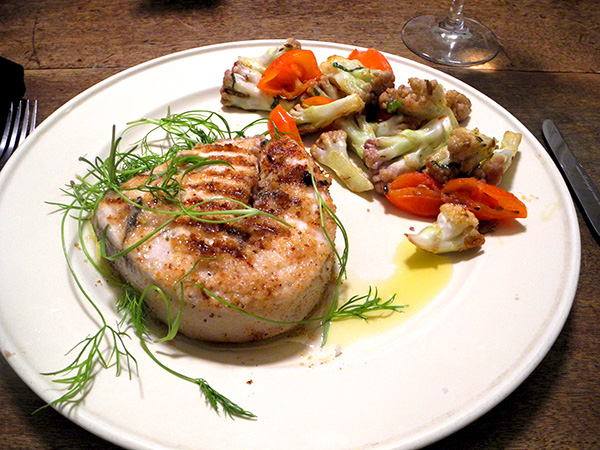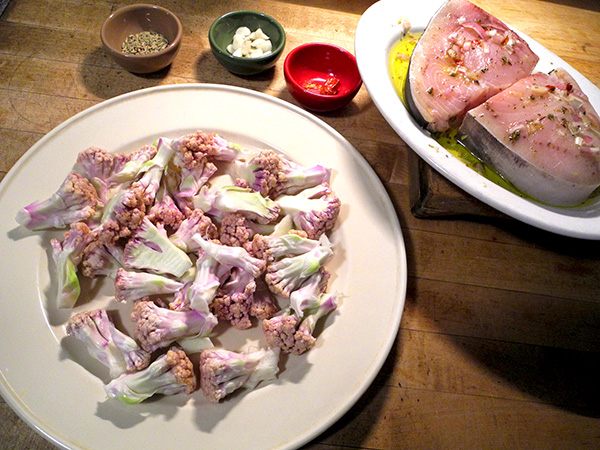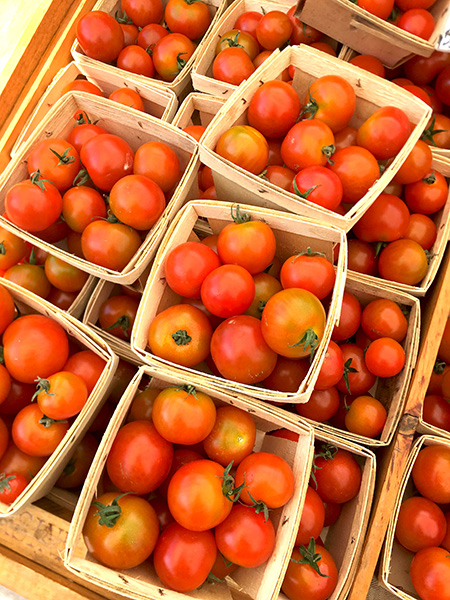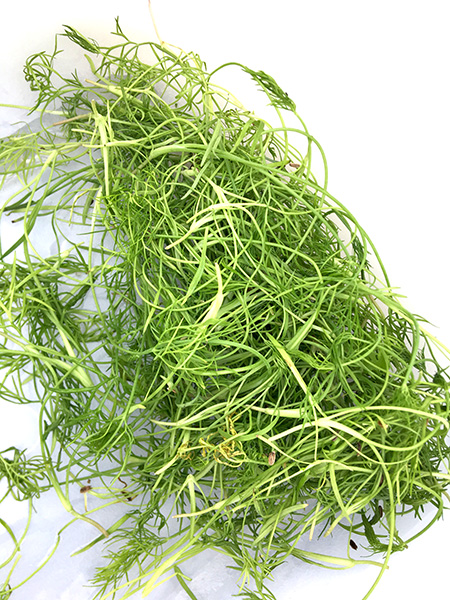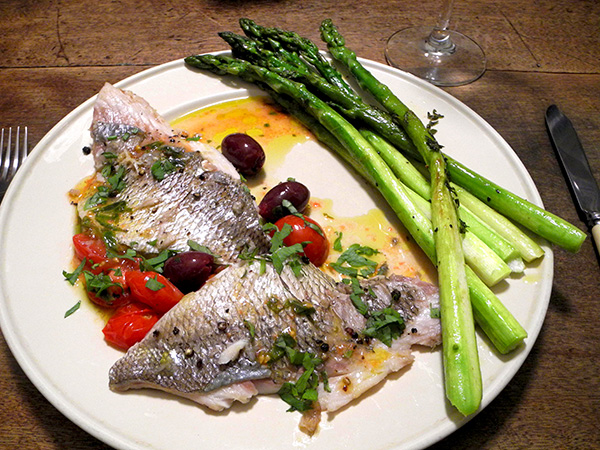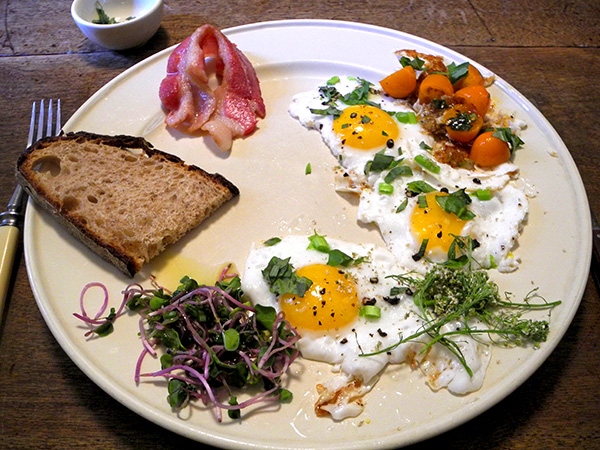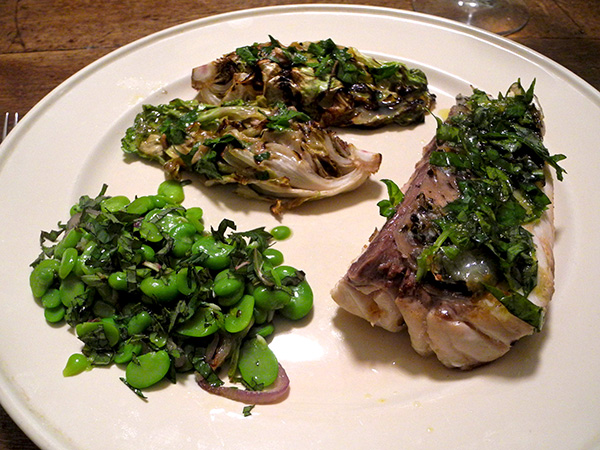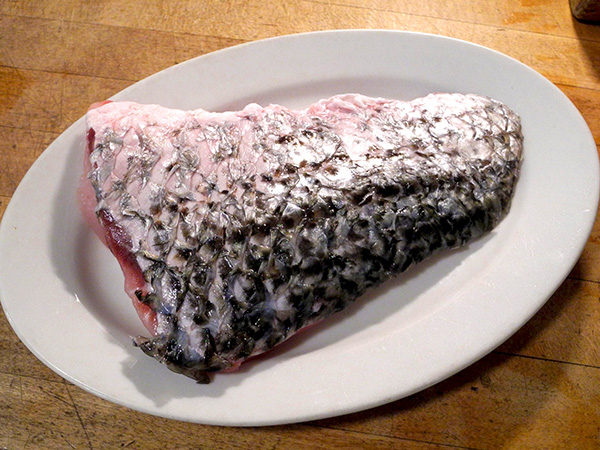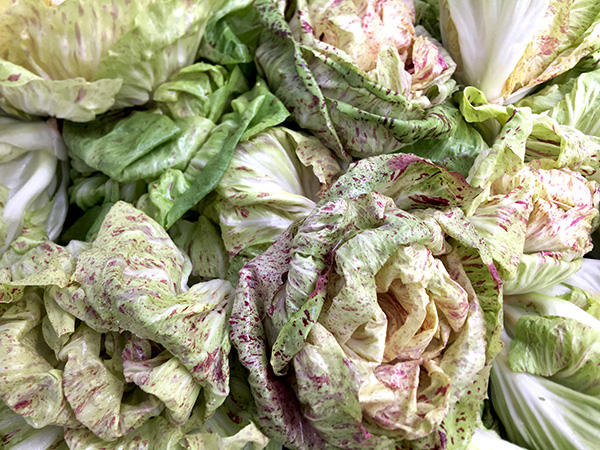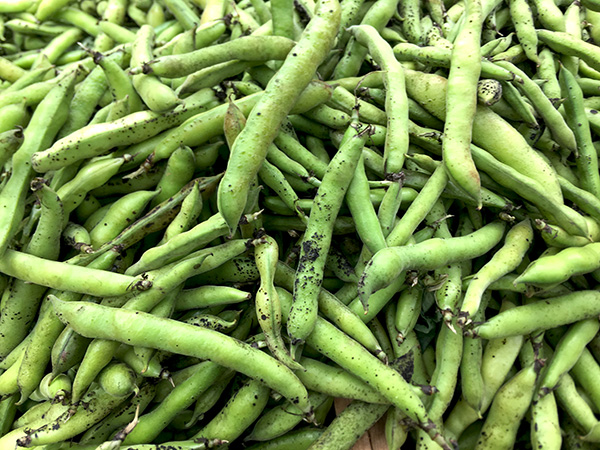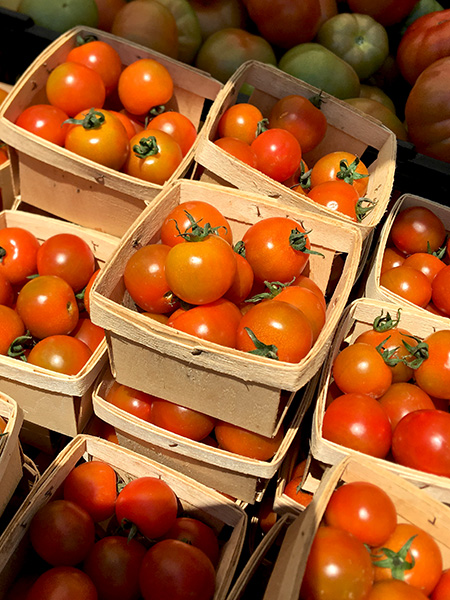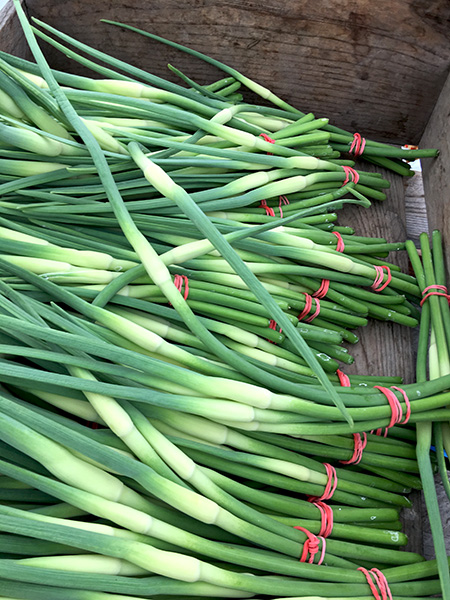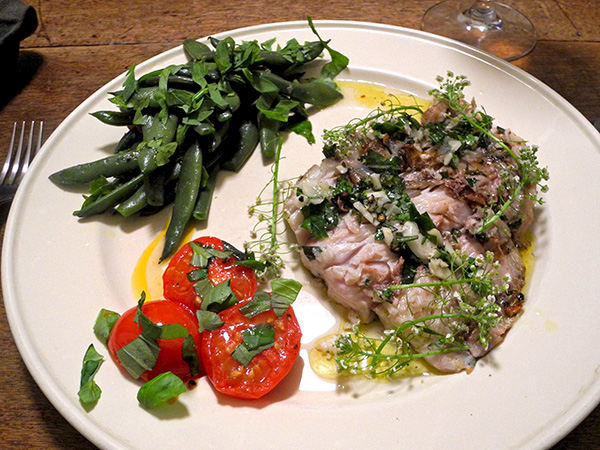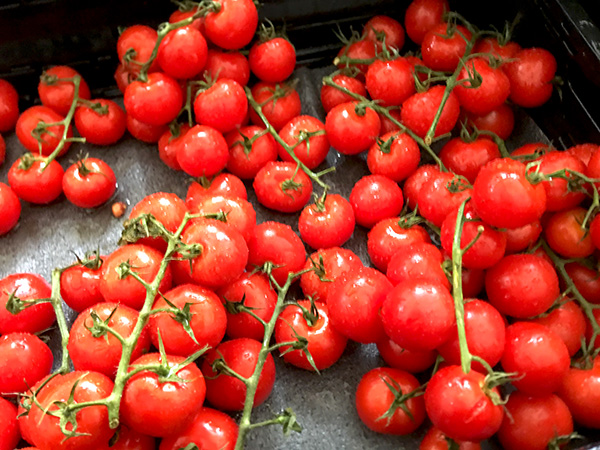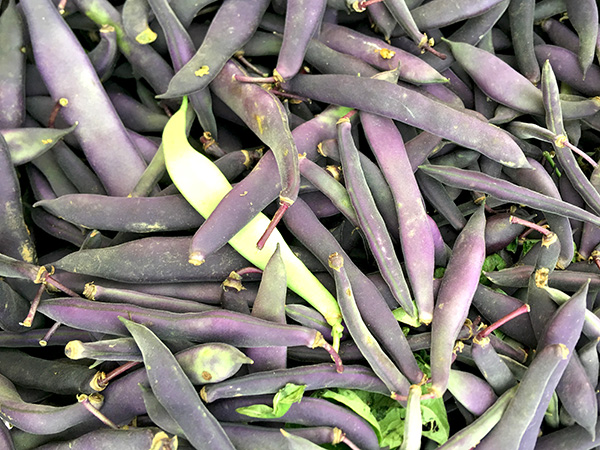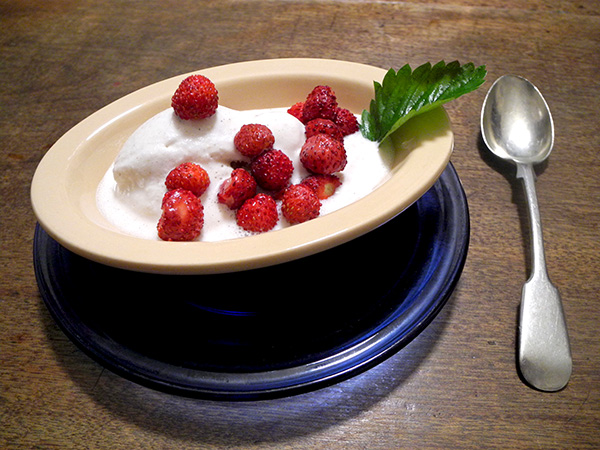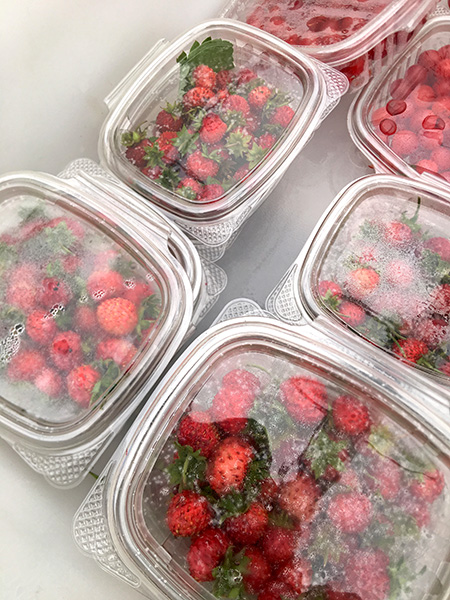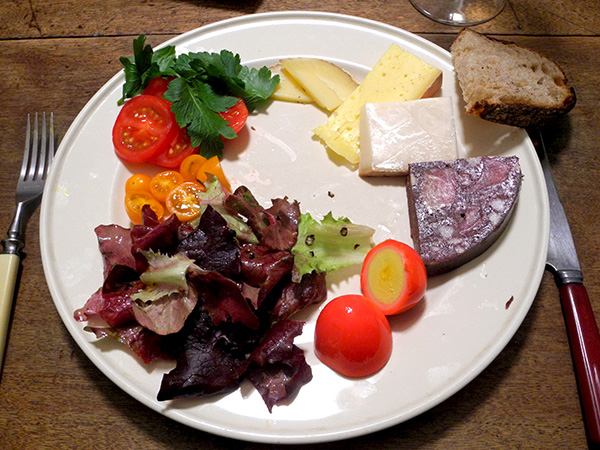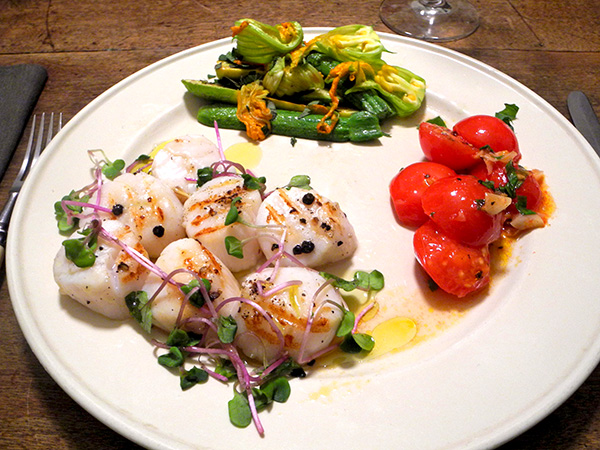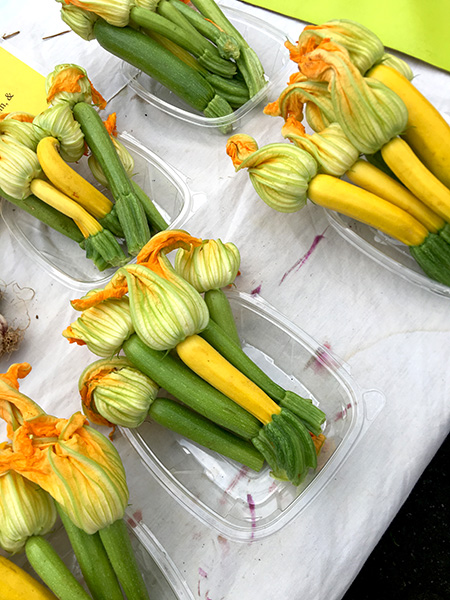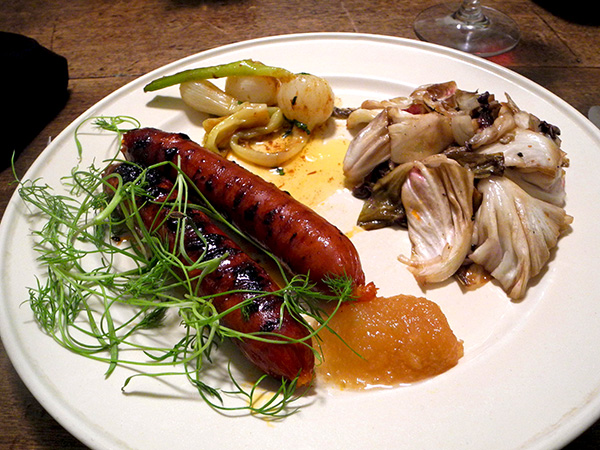
I had thought this meal would only be a ‘placeholder’, since I had come down with a cold the night before and on this night I was also going to have to prepare for the arrival of a new refrigerator the next morning, possibly as early as what we normally consider ‘dawn’. I had even contemplated ordering in, since the knock down operation connected to abandoning the old unit had at first looked somewhat daunting.
In the end I decided to cook a meal, knowing that in doing so I would have that much less to worry about keeping cold while switching refrigerators the next day.
Barry was happy we didn’t have to go the takeout route, especially once we had both realized what a great dinner we had on the table in front of us, and I was shocked at how good it turned out.
The sausage was superb, and, as we had learned earlier, far more spicy than anyone might expect from a Pennsylvania Amish family’s farm. I had remembered that curiosity, and the memory was punctuated by the effect their hot pepper, even that contained in the sausage casings, had on my sinuses while they were being grilled.
I pulled out a small jar of an Italian quince confiture while the chorizo was cooking and added a dab of it to the edge of each plate.
The vegetables were also stars. They were pretty much the only ones I had on hand, but they were a perfect compliment to the sausage.
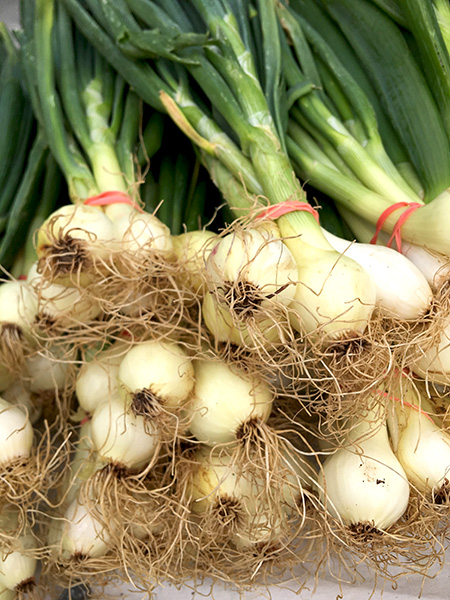
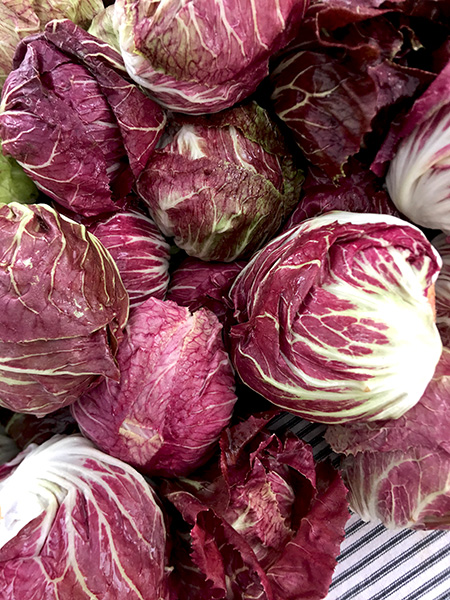
- Four 3-ounce links of a wonderful spicy chorizo sausage from Millport Dairy Farm, pan grilled for a few minutes over a medium flame until heated through, served with an Italian quince confiture from Westside Market, Lazzaris’ Salsa di Mele Cotogne
- one bunch of spring onions from Alewife Farm, trimmed, although with much of their green stems still attached, placed with a tablespoon of butter and a quarter cup of water inside a heavy tin-lined copper pan, brought to a boil, covered, the heat reduced and the onions simmered until the bulbs were almost tender, about 10 minutes, uncovered and cooked a few minutes longer, turning the onions occasionally, until bulbs are completely tender and the liquid mostly evaporated, removed from the heat and 2 tablespoons stirred in, tossed with a generous amount of chopped epazote from Windfall Farms
- two chopped red spring onions from Alewife Farm warmed with a little olive oil until softened inside a large, high-sided tin-lined copper pan, one head of radicchio from Campo Rosso Farm, roughly-chopped, added to the pan with some sea salt and freshly-ground Tellicherry pepper and stirred until the chicory had almost wilted, finished with barely a splash of balsamic vinegar and arranged on the plates
- the wine was a California (Lodi) red, Sharon Weeks Cattoo Lodi Malbec 2015, from Naked Wines
- the music was Johann Nepomuk Hummel’s 1810 opera, ‘Mathilde von Guise’, Didier Talpain conducting the Solamente Naturali
